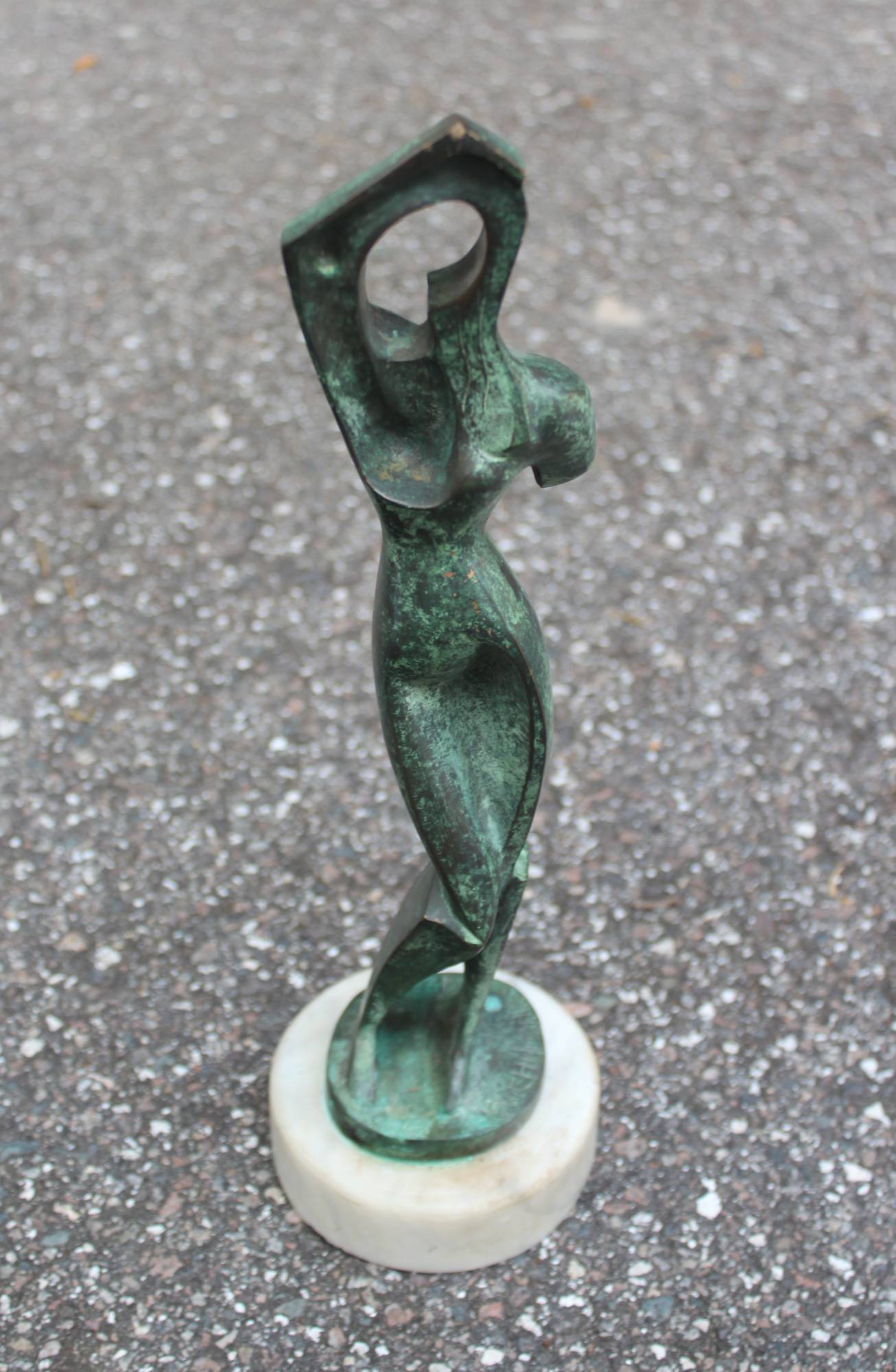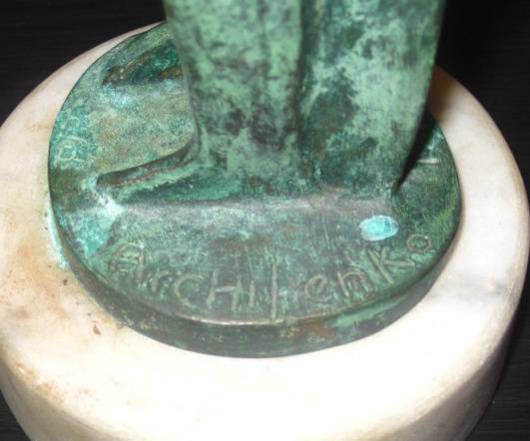Woman Combing her hair

Archipenko, Alexander
1887 - 1964
Woman Combing her hair
Bronze with green patination on its original white marble base
13 3/4 x 3 7/8 ins
A later cast after Archipenko's original of 1915
Signed and dated 1915 and marked 8/8
PROVENANCE:
Private collection, USA
Archipenko's Woman Combing Her Hair, generally thought to date from 1915 but possibly made in 1914, was the first in a series of standing figures by the artist, including the Statuette of 1915, Standing Figure of 1916, and Egyptian Motif of 1917, all based on formal inventions initially seen in his work in the well-known Walking Woman of 1912. In the Cubist-inspired syntax of that figure, Archipenko rejected solidity and continuity of form, substituting voids for masses, reversing concavities and convexities, and replacing anatomical with geometrical logic.
In the statuettes of 1915-1917, although more classically proportioned, he canceled the solidity of the head with penetrating holes, and articulated breasts, abdomen, and legs by alternating positive and negative volumes. The introduction of space into interior forms in these works, linking front and back, inside and outside, constitutes one of Archipenko's major contributions to twentieth-century sculpture and parallels contemporaneous inventions in the art of Umberto Boccioni and Naum Gabo.
Most of the dated casts of the original so-called "13 ¾-inch version", are marked 1915 or 1914 (for a discussion on this see Donald Karshan, 1985, no. 28). An undetermined number of bronze casts, without casting date, were also made and exhibited before 1920. This version, although dated 1915, has been examined by the Archipenko Foundation and is a later cast of unknown date.

Base of bronze on original white marble base
Additionally, there are later casts in polished and gilded bronze. As with several other of his early works, Archipenko returned to this figure late in his life when he enlarged it, producing a version 63.5 centimeters high (edition of eight casts) and another 180.5 centimeters high (edition of seven casts) and these are from the 1950's.


